Even though chickens aren’t picky about their habitat, they need a secure and comfortable place to lay their eggs. Nesting boxes are cost-efficient and effective in containing your chickens. They also provide a conducive environment for your chickens to lay eggs. However, only good nesting boxes will be effective in the long run.
How Many Chickens Should Be In A Nesting Box?

You shouldn’t have too many chickens in a nesting box as each chicken needs its own space. Usually, the chickens in one nesting box shouldn’t be more than five. However, there are variations to this rule, but you should ensure that the nesting box isn’t overcrowded. You should consider the following when deciding how many chickens should be in a nesting box.
Breed
This is very important as the breed determines the personality and social disposition of the chickens. For instance, some chicken breeds are friendly and sociable and will relate well with chickens from different breeds.
Some are hostile and fight with other chickens from the same breed as them, let alone relate well with chickens from different breeds. If you’re breeding chickens with naturally not-so-friendly personalities, it’s advisable you don’t put many in a nesting box and watch over them regularly.
Size
The size of your chickens matters too. For instance, 5 standard-sized chickens may fit into a reasonably large nesting box perfectly, while it may not be the same for large-sized chickens.
A chicken needs its personal space as well, no matter how big it is. If the chicken doesn’t get it, it might get frustrated. As such, if your chickens are huge, you might not be able to follow the rule of 5 chickens per nesting box.
However, it’s not advisable to isolate chickens in nesting boxes. No matter their personalities, chickens are very social, and they want to be around other chickens. A chicken may fall sick due to isolation. Being around others of its kind enhances a chicken’s health.
At the same time, don’t put too many chickens in your nesting box. Once the box gets overcrowded, the chickens start to fight and become stressed, which affects their egg production. Sometimes, the eggs get broken in the process. As such, your chickens should have more than enough space.
You might need to add more nesting boxes as time goes on. For example, if you notice that egg production isn’t as smooth as expected or eggs are getting broken, add more nesting boxes.
4 Benefits of Using Nesting Boxes To Raise Chickens
Nesting boxes are common and effective places for raising your chickens. They help to ease the process of laying eggs. Some of the benefits include:
Privacy
Usually, hens like to lay their eggs in a somewhat isolated place, especially shy hens. This is why you’ll see a hen laying eggs stay in a corner and not associate with other chickens. As such, hens need all the privacy they can get during egg production, and a nesting box provides them that.
Reduced broken eggs
If chickens are too much in one place or don’t allow for the easy removal of eggs, most of the eggs you should collect will break. This can be very frustrating, considering the number of resources you’ve invested in breeding your chickens.
As such, you have to reduce the number of broken eggs to reduce your losses, and nesting boxes are good for that. You can easily remove the eggs, and since they won’t be overcrowded, the chances of the chickens fighting and breaking their eggs will be reduced.
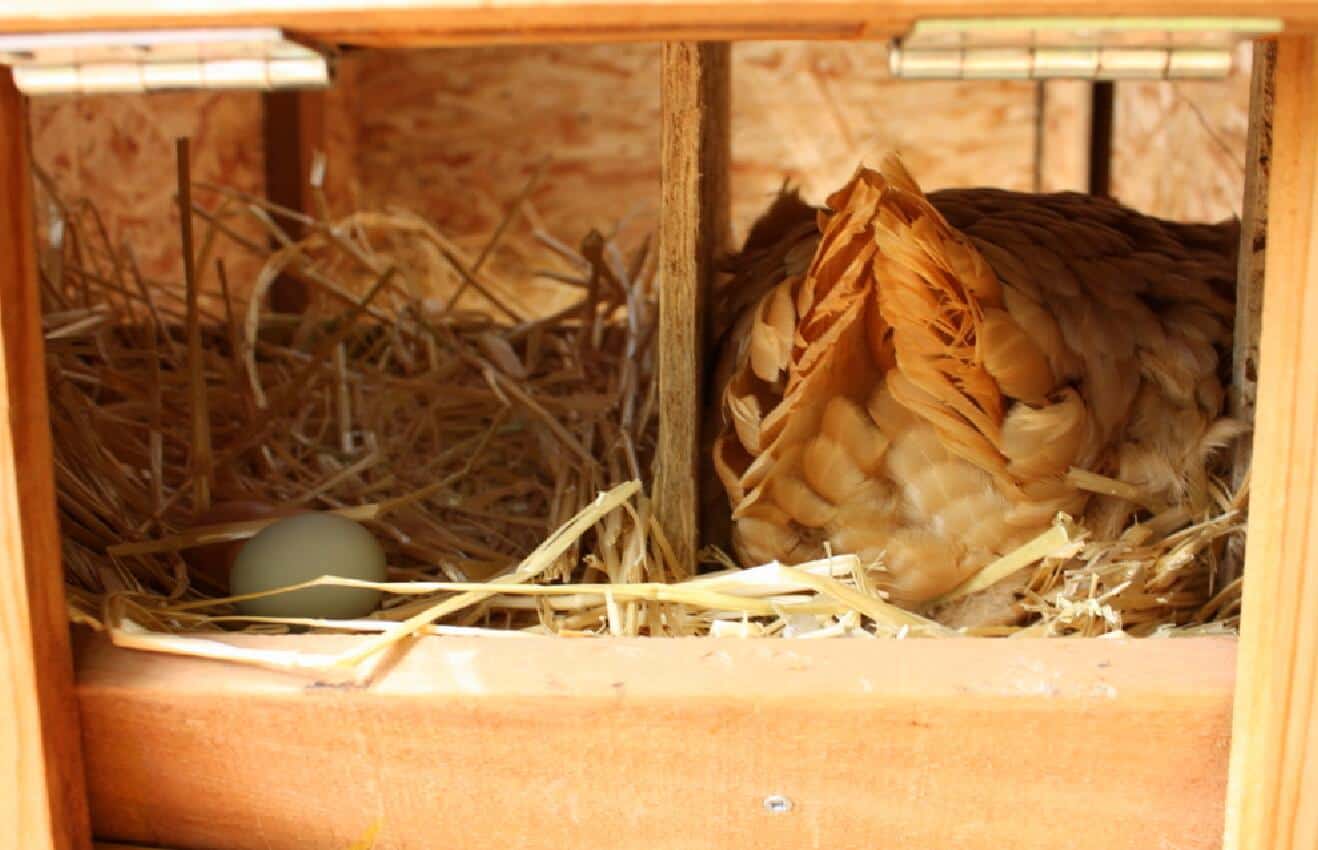
Easy cleaning
Also, nesting boxes are easy to clean. Keeping wherever your chickens stay clean is an essential duty you mustn’t fail to do. Dirty habitats don’t augur well for your chickens’ health.
Chickens have very sensitive respiratory systems that make them prone to sickness. Since you want to raise healthy chickens, you always have to clean their habitats. Nesting boxes are among the easiest chicken containers to clean, so cleaning them regularly won’t be a burden.
Durable
Depending on the quality of the material they are made from, nesting boxes are durable. They last for long periods when used well. Besides, most of them are easy to assemble. Ensure you get top-notch nesting boxes when buying so that you won’t have to replace the boxes every year or encounter problems when using them.
However, while nesting boxes are easy to clean, you don’t need too many nesting boxes. Using too many only means, you’ll have more boxes to clean as your chickens will not hesitate to soil all the boxes. Chickens are quite messy and tend to poop everywhere. Besides, their poops can spread germs, and you don’t want that.
5 Tips To Consider When Choosing Nesting Boxes For Your Chickens
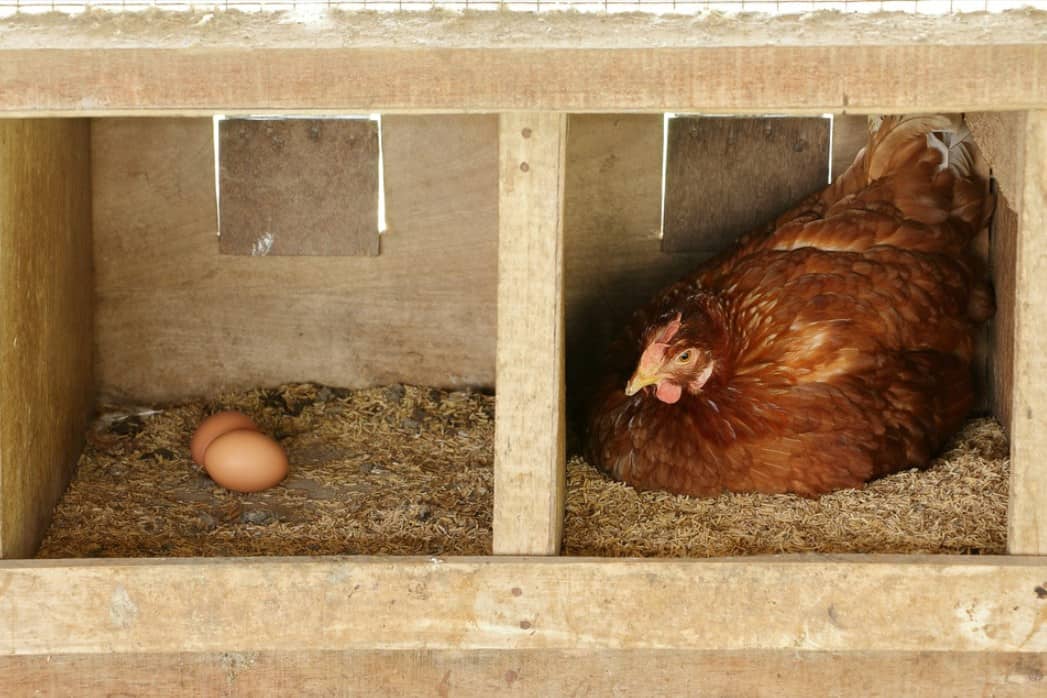
You can buy or make a nesting box. Whatever you choose to do, ensure your nesting box meets the criteria below. This will make growing your chickens easier.
Size
The size of your chickens determines the size of the nesting box. Usually, a nesting box shouldn’t be less than 14” all-round, but if you’re raising large-sized chickens, boxes of such size may not contain your chickens.
They don’t want to feel boxed in because that affects their performance. You should also consider how many chickens will be in a nesting box. Stick to the rule of thumb that says no more than 5 hens per nesting box. Ensure the nesting boxes aren’t too close to the ground for a clean environment.
Cleaning
Another essential criterion for choosing an effective nesting box is that it should be easy to clean. In fact, easy cleaning is one of the qualities that set a nesting box apart from other chicken containers. As such, when buying a nesting box, inspect it well to see if it’ll be easy to clean and collect eggs from. If you’re making one by yourself, factor in ease of cleaning and laying of eggs.
Non-porous material
Nesting boxes should be made of non-porous materials. Porous materials such as wood allow for the passage of things like moisture, pests, parasites, etc. For instance, even though a wooden nesting box is cheaper, it is very porous.
It can easily hold broken eggs and other liquids, which impedes the cleanliness of the nest. Besides, pests can effortlessly bore through the wood to harm your chickens. Plastic or metal nesting boxes are better for keeping your chickens.
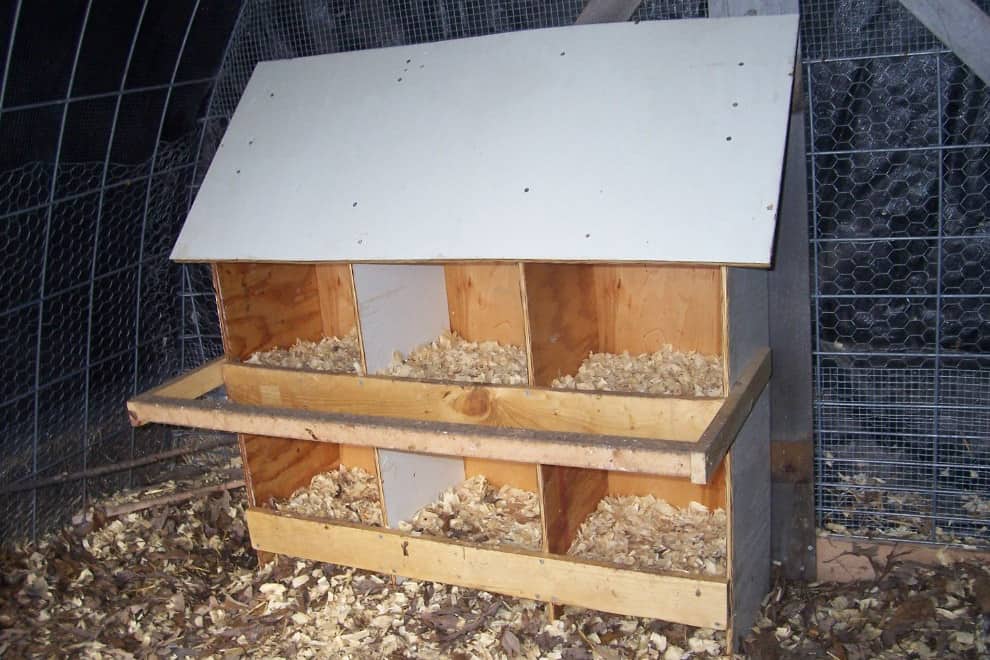
Security
The nesting box you choose should fit into the most suitable location for your chickens. You should keep in mind that nesting boxes should be kept out of the reach of both animal and human predators, weather conditions such as rain, intense sunlight, etc. Chickens get easily upset when they sense signs of danger around them, and this affects their health.
Homeliness
A nesting box should make your chickens feel at home because it is their home. If your chickens aren’t comfortable in their nesting boxes, they’ll look for another home. Beyond getting the right size and material, make their nesting boxes feel like home too.
5 Ways To Take Care Of Your Chickens’ Nesting Boxes

No matter the quality of the nesting box you buy, you have to care for it because it is where your chickens lay their eggs. Here are some tips for taking care of nesting boxes.
Always remove the eggs
You have to be on the lookout for when your chickens lay their eggs in their nesting boxes so that you can remove them immediately. Keeping the eggs longer in the nesting boxes isn’t safe; your chickens might have a fight or get hungry and break the eggs. Collect eggs that aren’t meant for hatching as soon as they are laid. This will reduce the number of cracked eggs you get.
Keep the beddings clean
You have to keep the bedding layer clean always. First, ensure the bedding is thick enough to make your chicken comfortable and eggs safe. Clean out the bedding weekly; note that the thicker the bedding, the less often you should clean it.
Also, if your chickens don’t produce too much waste, you don’t have to clean out the bedding often. However, inspect the bedding regularly for signs of any strange thing; you don’t have to wait till its cleaning period.
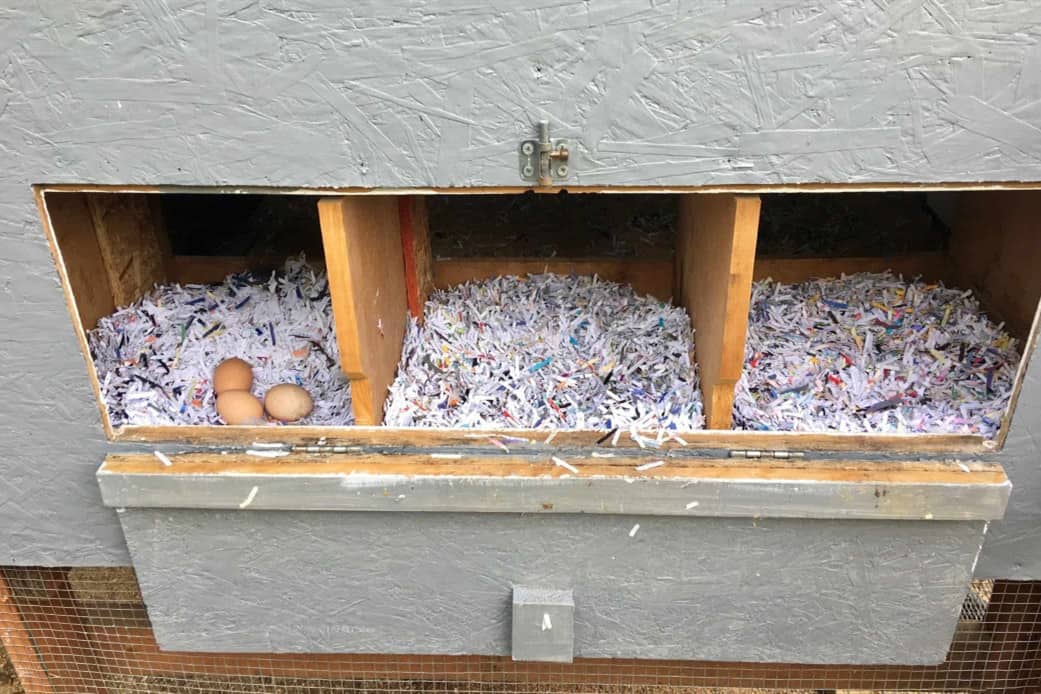
Inspect the nesting boxes
You never can tell what might happen to your nesting box that’ll put your chickens in harm’s way. Regular inspection will help you detect any changes and deal with them as soon as possible.
If you’re using non-porous materials such as plastic or metal boxes, you don’t have to be particular about a routine inspection. But if your nesting box is made from a porous material like wood, you have to inspect it regularly and ultimately change it. In the meantime, you can paint the wooden box to seal the holes.
Take care of your chickens
There’s no point taking care of the nesting boxes if the chickens in them aren’t taken care of. Feed your chickens with their regular diet, even if they free-range. Feed and water should always be close by because chickens eat almost all the time, except when they are full. Also, monitor your chickens. Take them up and feel their weight, checking for odd signs on their bodies. Prepare them for the cold season as well.
Summary
As a rule of thumb, there shouldn’t be more than 5 chickens in a nesting box. You shouldn’t isolate your chickens, nor should you sandwich them in a nesting box. However, putting 5 chickens in a nesting box isn’t fixed. The number of chickens can be lesser if the chickens are large-sized. What eventually matters is that your chickens feel at home in their nesting boxes.
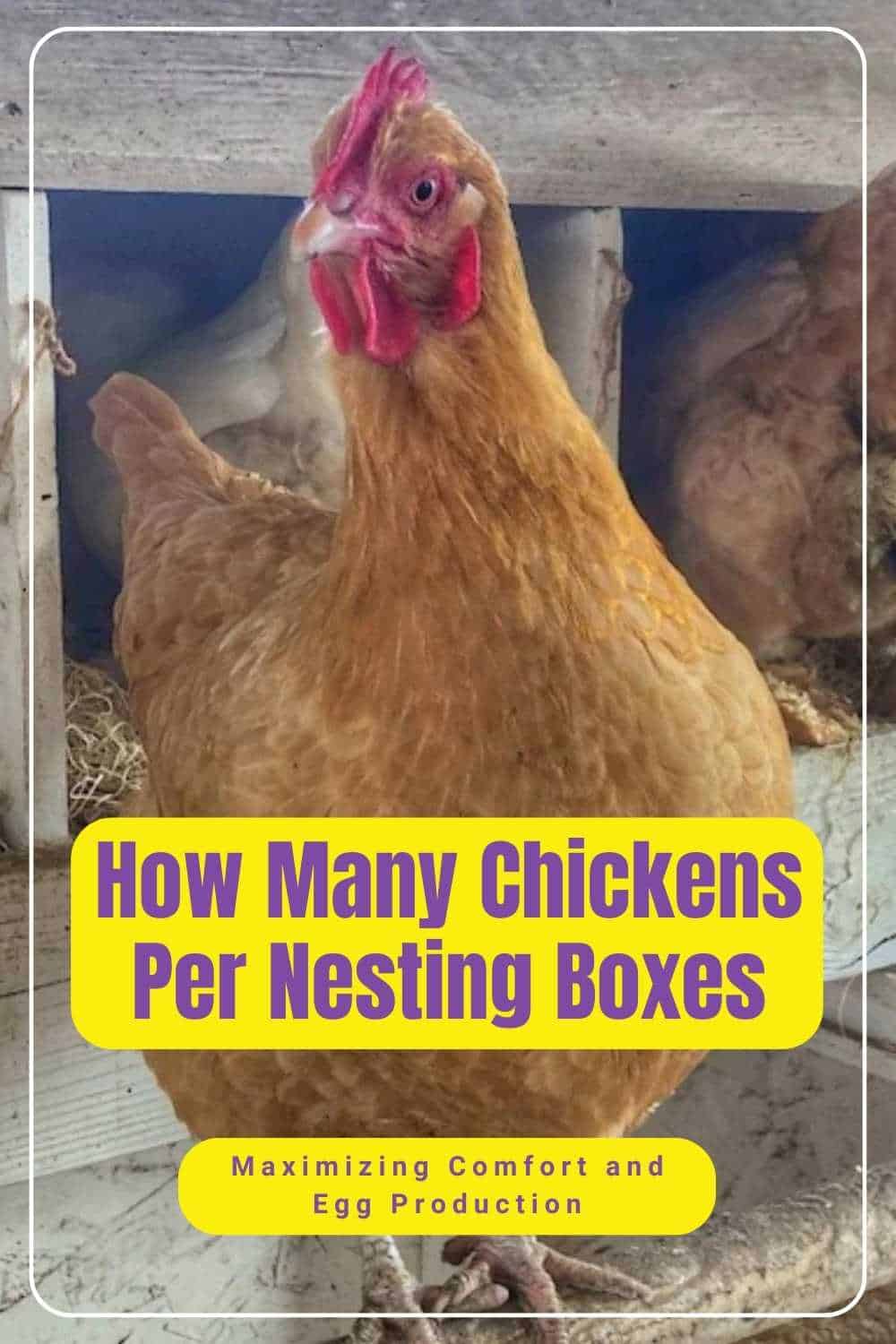

Joseph Hudson has been raising chickens for over 15 years. In 2018, he completed the Agriculture & Natural Resources program at Mt. San Antonio College. He currently raises over 1400 chickens on his 7.5-hectare farm. He keeps sharing his experience on raising healthy and happy chickens on Chicken Scratch The Foundry.








This has been helpful as I am realizing I have a larger breed of chicken and have been using refurbished coops for smaller birds. The mortality rate after chicks are born has been due to over crowding and stress amongst broody hens. They compete for space and end up being too aggressive in a new born environment. I am guilty of operational error